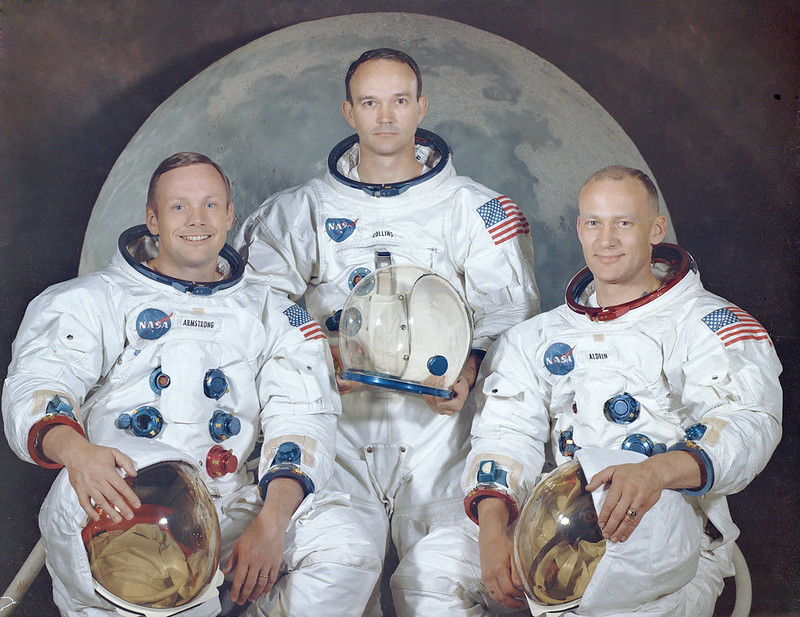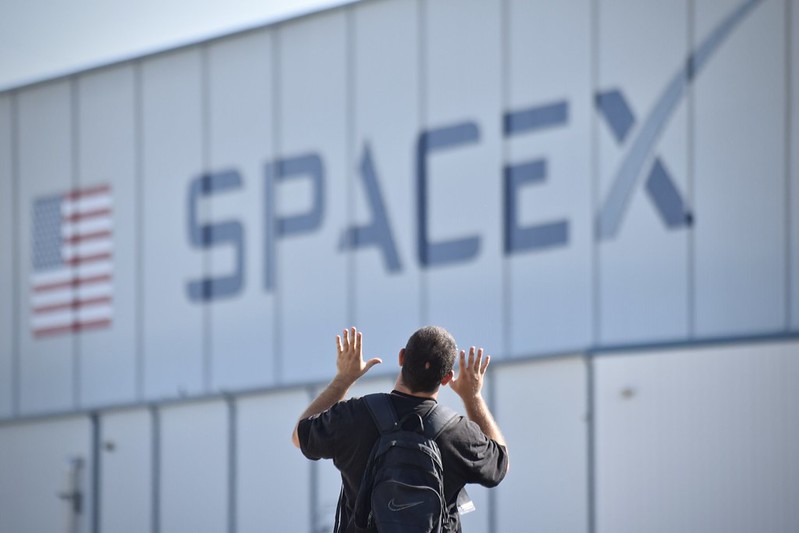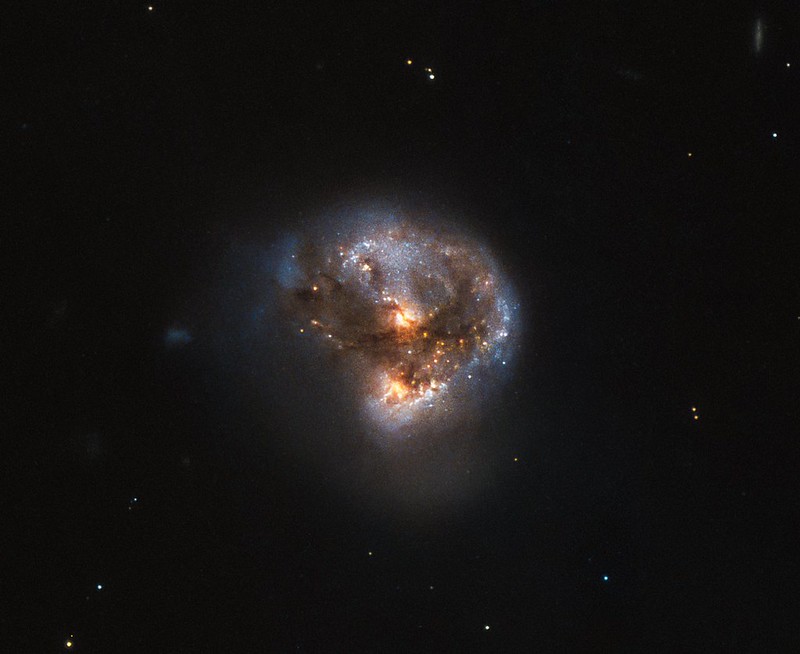If you’re a person that likes science fiction, you’re most likely conversant with the numerous movies, TV shows and books giving a vision of what the future is likely to be for humans. However, is there any fact in huge spaceships occupied with whole groups of people or planets with extreme conditions being made livable all thanks to big, self-contained cities?
Few of the most popular features of famous science-fiction are closer than ever to turn this into a reality. At the moment, a lot of the world’s richest entrepreneurs are investing in humanity’s future. For instance, some are donating their money into space shuttles, taking the essential steps required to create a supply line between Earth and places such as the moon and Mars.
Also, development being made in other aspects such as nanotechnology and artificial intelligence, in order for us to have realistic means of looking for other galaxies for hospitable planets and establishing homes on planets that are not really hospitable.

Chapter 1 – Scientists have been nerding out on rockets for more than a century now.
There’s so much focus on space travel nowadays, with privately-owned ventures such as SpaceX being in the news with their goal to take clients into the great beyond.
For quite a while now; sending rockets into space has been a human attempt, going back past the 1950s, which witnessed the alleged space race between the US and Russia.
The first huge scientific innovation in space travel was from Konstantin Tsiolkovsky the Russian scientist. In the year 1903, he published work that comprised of the Tsiolkovsky equation, which offered a strong mathematical association between a rocket’s fuel and the rate of speed it could attain. Using this equation, Tsiolkovsky showed that it was really attainable for a rocket to leave the Earth’s atmosphere, and now scientists could estimate the quantity of fuel required to go the travel to Mars or the moon.
Tsiolkovsky’s work set the basis for other pioneers such as Robert Goddard, the American scientist. Goddard was the first person who created the switch from powdered to liquid fuel and presenting efficient multi-staged rockets consisted of various fuel tanks abandoned as dead weight after use.

During the 1940s, more innovations were made. A graduate student of physics named Wernher Von Braun when Germany started its militarization under the Nazi regime. Braun got a job He as a rocket scientist with the country’s huge drive to create cutting-edge weapons. Being firmly a rocket nerd, he wasn’t fascinated in politics when he got large amounts of government funding and was made the leader of the V-2 project, or Vengeance Weapon 2.
With the best scientists and affluent funding available to him, von Braun’s V-2 rocket was faster than the speed of sound three times and safe to defenses. At the same it set new records in rocketry; also, it would attest disturbing when utilized as a missile against the capitals of London and Antwerp during 1944.
Afterward, Von Braun was arrested by the Gestapo after seeing the slave labor camps that assisted create his rockets and he showed remorse about taking part in the Nazi war machine. However, von Braun would be essential to the space race that followed.
Chapter 2 – During the 1960s, Humans first got on the moon; however, at the moment there is renewed interest in going back.
Two incidences put the US really behind the Soviet Union in the contest to outer space: the first incident happened in 1957 when the Soviets launched Sputnik –which was the first human-made satellite. Afterward, in 1961 – much to the happiness of the Soviet Union and the annoyance of the US – Yuri Gagarin was the first human ever to orbit the earth.
At this worse moment, the US was resolute to be the first person to set a human on the moon.
In July of 1969, this dream eventually turned into a reality, when NASA’s Apollo 11 mission carried Neil Armstrong and Buzz Aldrin safely to and fro to the moon. Saturn V the largest rocket during its time made this famous incidence possible by the Saturn V. The rocket’s creator was Wernher von Braun – who was taken during the end of WWII from Germany to the US to work for them.
The moon landing was a difficult deed to chase and concentration in rocketry and space travel reduced during the 1970s. With poverty spreading in the US and the occurrence of the Vietnam War disaster, using huge amounts of money on NASA projects looked insignificant.

So many things changed from that point, and currently, the moon is once more a hot subject. A lot of this focus is as a result of billionaire entrepreneurs funding their own visions of space exploration.
Blue Origin – Jeff Bezos, the venture of Amazon creator– has already made a rocket system known as New Shepard. The system wasn’t made to attain speeds that are really fast to reach the Moon and come back; however, it has the potential to make space tourism a realistic, new business.
Bezos has a long-term aim to go further than tourism and inhabit the Moon. In 2017, Bezos declared his aim to create a delivery system for taking building resources and supplies from the earth to the moon — a huge first step to making it a feasible living choice for humans.
However, as we’ll learn in the following chapter, there are over a few obstacles to defeat before the moon turns into our second home.
Chapter 3 – Before we can stay on the moon, there are a lot of issues to defeat.
Taking people to live in the moon is definitely something that is possible; however, making the environments for comfortable living is a different issue.
In order for humans to survive for a long time, we require adequate of three important things: water, food, and air. Can we get those things on the moon?
Different from Earth, the atmosphere of the moon isn’t rich in oxygen; therefore, we’d need to look for means of producing oxygen there or make me bring it with us from Earth. Presently, there are a number of chemical reactions that can be utilized to take oxygen from water and soil.
Also, there’s a huge amount of ice on the moon, with an approximated six hundred metric tons on its north pole only. This ice can be discovered in the entire places sun can’t get to, like within craters and behind huge mountain ranges. Additionally to being a source of drinking water; also, it is a good source of oxygen.

Although we can’t find food in any craters, it could be developed as soon as oxygen is collected. Also, the sun will be a significant asset for producing food on the moon, and that’s not its only advantage. Solar panels are a good benefit for producing energy, and they could be sited on specific mountain peaks on the moon’s north and south poles where the sun doesn’t completely set.
But, the sun also gives radiation, which is a huge risk to anybody living on the moon.
As you likely know, radiation exposure causes cancer, and using longer time on the moon’s surface would endanger people to risky levels, as a result of solar flares and the absence of a protective atmosphere. One feasible answer is to create underground shelters with lava tubes from olden volcanoes. The people would be protected from the radiation for the sun by sheltering deep underground. sun’s radiation.
Chapter 4 – SpaceX is taking us closer to cities on Mars; however, there are more difficulties to conquer.
Together with Amazon’s Jeff Bezos, people across the globe have gotten conversant with the name Elon Musk – the billionaire entrepreneur in charge of the SpaceX program. Although Bezos has his eyes fixed on the moon, Musk is looking a little further, to Mars. He wishes to make human beings “multi-planetary” and offer them other living quarters to Earth.
Just like Bezos, Musk has already donated to space travel while getting closer to his long-term aim of colonizing Mars.
SpaceX has made a smart rocket system that makes use of reusable booster rockets; this is important as booster rockets have usually been made for just single-use. By looking for a means to reuse rocket engines, SpaceX was able to decrease its prices significantly.
To take a satellite into space, SpaceX is requesting for a thousand dollars for each pound of payload. The former normal cost was one hundred thousand dollars – and they’ve already done some launches that are successful

Meanwhile, SpaceX has declared its ideas for an unmanned mission to get to Mars at the end of 2018, with a manned mission in the operations for 2024. This would make the new business be years ahead of NASA, which targets to make their astronauts reach Red Planet no sooner than 2030.
Elon Musk’s impressive mission is to create a whole city on Mars that functions mainly on solar power, occupied by the people frequently being flown out to assist create it.
But with the moon, life on Mars offers its own exceptional difficulties. Together with the hazardous levels of radiation present there, the planet’s atmosphere offers a lot of issues.
The air consists mainly of carbon dioxide, with atmospheric pressure just 1% that of Earth’s. Also, low atmospheric pressure entails that the required to boil liquid is very lower. People have to make use of spacesuits to make sure an appropriate pressure for their bodies; if the suit had just a bit openings, a person’s blood could possibly begin to boiling.
Also, on Mars; there’s really small gravity on Mars, and because our bones and muscles are made for certain Earth conditions, we would have to look for means to stop atrophy. Presently, astronauts in low gravity have to walk on a treadmill for a minimum of two hours daily to remain healthy.
Chapter 5 – In order to make cities in outer space, we’ll have to make use of intelligent robots and nanotechnology.
Now, you might be wondering, “Isn’t it costly to build a city on Mars?” Certainly, building a city in the conventional sense, by making use of manual labor and moving equipment and materials, would be really expensive: the budgeted prices could possibly bankrupt NASA and the whole country.
However, this doesn’t entail that a city is impossible Rather, we have to look at different ways of building like making us of nanotechnology, adding a material called graphene.
Graphene is consists of carbon atoms that have been bonded and shaped into micro-thin sheets that are remarkably tough –as a matter of fact, two hundred times stronger than steel. For building reasons, these sheets can be folded into carbon nanotubes, which are then made to create the materials for creating buildings, homes, and bridges.
Also, Graphene can be utilized to conduct electricity, allowing it to be more beneficial. But, a lot of these benefits rests on our skill to mass-produce graphene without any of the contaminations that could make it unusable. At the moment, we can just create tiny sheets lose to the size of a postage stamp; however, chemists are confident that mass production will be possible in the following century.
For those who will build the cities of Mars, it looks essential that artificial intelligence (AI) would be needed.

Because the building of city tasks tick all the boxes of the “Three Ds” by being dull, dirty and dangerous, it’s the ideal task for automatons – or robots that make use AI. This is particularly the situation for dirty jobs humans specifically hate, like working in sewers and creating sanitation systems. Nevertheless, automatons wouldn’t complain after a long day of boring, repetitive work in the hot Martian sun. As a matter of fact; they wouldn’t even become exhausted at al!
Automatons are ideal for both the moon and Mars because they could explore hazardous regions, like old lava tubes, while enduring dangerous temperatures and radioactive atmospheres.
Although this level of advanced AI has not been perfected yet, it seems like we’re on track to witness these automatons in the not really far future – and they’d be the ideal device to assist us to get away from our earthly restrictions.
Chapter 6 – We could see beyond our galaxy with new technology; however, there are some problems.
For as long as we’ve been thinking of our own travels to Mars or moon, we’ve been thinking about the mysteries that are waiting for us on far planets and distant galaxies. This asks a significant question remains: “Are there any Earth-like planets present in the deep recesses of space?”
A significant device in giving us an answer to this question may be the nano ship.
A nano ship is a spaceship with the size of a thumb that carries a computer chip holding billions of sensors. Light sails provide the pressure of light to make the nano ship move at cleverly fast speeds, making use of a laser or the sun’s rays to move along a set course.
Also, a nano ship can other sensors as well as capture pictures, record data, take pictures and transfer information back to Earth. The main benefit of a nano ship is that it doesn’t need costly rocket fuel and since it’s really light in weight; it can travel to the moon within five seconds!
Alpha Centauri System would be the first practical journey for one of these spaceships– which, at four light-years away, is our nearest neighboring star system. A nano ship could get there in about twenty years.
However, before you get become overexcited, there are still some extreme hindrances to defeat.
The first thing is looking for an appropriate power supply: it would need a minimum of 100 gigawatts of power to get a nano ship to reach Alpha Centauri. Our present nuclear power plants max out at about one gigawatt; therefore we’d require maybe a private investor or federal funding to form a new plant for a project such as this.

Precision is another hindrance: if the laser beam is only a bit off when hitting the light sails, the nano ship could eventually go wildly off-course. Also, laser beams as well lose 50% their power only getting through the Earth’s atmosphere.
But, It’s possible however we could have laser stations –and nano ship launch sites – on the moon and another place in space. Solar panels could be utilized at these spots to make the lasers beams completely powered, and just like the other off-world projects, this could be a duty for automatons.
Chapter 7 – In order to endure centuries of space travel, choices would need to consist of multigenerational starships and extending life.
Assuming we get our nano ships off to other galaxies and discover a different Earth-like planet with similar gravity and atmosphere. You might reason, great, let’s leave our congested, warming planet and go to this new world. But, before you begin to pack, you have to know the distances It takes. The habitable planet is probably really far, it’ll take centuries for us to get there.
One method around this issue is to form multigenerational starships, which possess the double capabilities of traveling to the massive distances needed while sustaining the life and death of numerous generations of people.
This obviously offers a whole variety of issues: How is a stable population sustained without it increasing exponentially over time to an amount that isn’t sustainable? This would need severe food limiting, birth control, and other cautious monitoring. Say a ship is made to take 2,000 people, it would be a tragedy if, in 50 years, that number multiplied by 2.
Another method to endure a journey that needs hundreds or thousands of years is to conquer aging.
In current years, Silicon Valley entrepreneurs, as well as other millionaire investors, have been pumping so much money into anti-aging methods. An example of such an entrepreneur is Sergey Brin, the Google co-founder, whose research company Calico is working on collaborating with the pharmaceutical company AbbVie for the single aim of looking for a cure for death.

The professor and Nobel Laureate Elizabeth Blackburn are only one of the numerous scientists also dealing with the aging problem. Blackburn’s focus has been on telomerase, a naturally occurring enzyme that has been presented to stop cells from dying.
Resveratrol has been another attention which is a chemical compound proven to initiate a certain molecule that can slow the oxidation process – one of the main biochemical processes involved in aging.
But, the majority of the scientists are uncertain about the works to fight to age and notice no indications of eternal life being found anytime from now.
Chapter 8 – Say intelligent alien life is real, there will probably be similarities along with the differences.
If you have an understanding of how an extraterrestrial alien might look, it’s most likely as a result of the numerous Hollywood movies on the matter. However, only because they’re the subject of a lot of science fiction, this doesn’t entail that alien life is out of the question.
Say intelligent alien life is real, they’re probably going to have one significant similarity to humans– aliens will be a carbon-based lifeform. The reason is that carbon fulfills two significant principles for life to form: the ability to store information like DNA and genes and the capacity to reproduce.
But, it’s possible that the chemical makeup of alien bodies will not be the same as that of humans. The chemical makeup of humans is a feature that’s unique to our evolution, just like how the aliens will be to their evolution.
If alien life occurs on some far planet, may it’s fifty or five hundred light-years away, they didn’t only come out completely formed – they would have changed the exact manner any other intelligent being has grown.
Keeping this in mind, we can form three educated assumptions.

Firstly, it is safe to assume that any intelligent life form will have the ability to communicate and transfer information. How they communicate will rely on the type of animal they evolved from. Because we came from primates we make use of our voice; however, they could very well have evolved from another animal that makes us of scents or smells to communicate, for instance, dogs. Or they could possess a musical manner of communicating, for instance, birds; or maybe they’ll make use of sonar of signals just as bats and dolphins do.
Secondly, if they’re part of the leading species on their planet, they will have evolved stereoscopic eyesight, which is the way species detect and avoid predators, and chase their own prey.
Finally, just like every intelligent animal, aliens will have evolved the skill to use tools and form and change their surroundings. There are so many animals that can’t take tools and make use of their environments to form a shelter; however, one of the most generally acknowledged signs of intelligent life –maybe it’s on our planet or some other planet – is the skill to pick up things, make tools and form homes.
Does the future entail humans making automatons that in turn form homes on far planets? We’ll only need to wait and observe.
The Future of Humanity: Terraforming Mars, Interstellar Travel, Immortality and Our Destiny Beyond Earth by Michio Kaku Book Review
There are so many eyes looking towards the stars nowadays. With hazardous levels of pollution increasing global temperatures, there’s a growing worry to look for means of securing the future of humanity. In order for this occur, we have to analyze deep space for other habitable planets or look for means to change inhospitable places, such as the moon and Mars, into practical, livable choices. However, it needs more than SpaceX rockets before we can form a livable place on Mars – for this, we’ll have to continue creating nanotechnology and intelligent machines.
